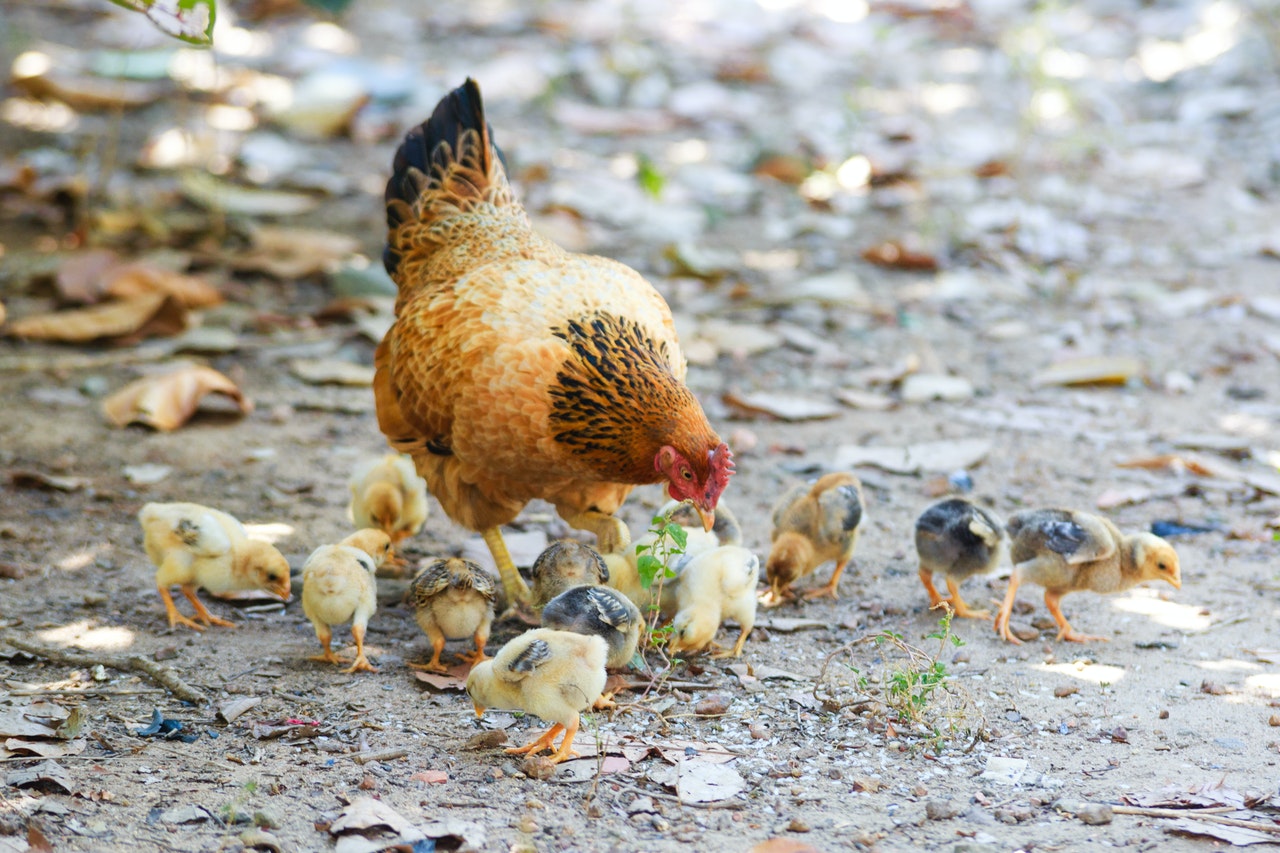When I was a child, I often went to visit my grandmother in the countryside. She had a small flock of chickens that freely roamed the front yard. At that time, I was mostly interested in exotic animals and paid little attention to the chickens. But now I regret that I didn’t observe their behaviour more, as chickens’ cognitive skills are more advanced than many people think.
Logical inference
Wild and free-range chickens live in groups with a hierarchical social structure. There is one dominant rooster and a dominant hen, subordinates of both sexes and chicks. The subordinates are not all equal, but form a so-called pecking order. Chickens can peck others who are lower in the hierarchy without fear of retaliation. If a new chicken is added to the group it has to find its place in the pecking order. But that does not mean that it has to fight each other chicken. Chickens watch each other’s fights and can draw conclusions from the results.
For example, if a new chicken beat a chicken that is dominant over the observer, the observer should avoid fights with the new chicken (if the new one is stronger than the dominant one, then the new one must be stronger than the observer). But if the new chicken lost to the dominant, then it might be worth it to attack the new chicken as there is a chance of winning. Chicken behaviour seems to indeed follow this logic. It is an example of self-assessment combined with transitive interference – a reasoning ability that humans develop only at the age of seven.
Numerical abilities
Even a few days old chicks can count, add and subtract (at least up to five). For example, in one experiment researchers showed chicks two sets of balls and then hid them behind two opaque screens. Afterwards they moved the balls between the screens, one ball at the time, while the chicks watched it. Afterwards chicks were able to indicate the screen behind which more balls were hidden.
Self-control
When given the choice between two keys to peck, one of which gave brief access to food after a brief delay, and one of which gave much longer access to food after a longer delay, hens preferred the second option. Therefore, they were willing to wait a longer time for a greater reward. In other words, chicken pass a kind of marshmallow test for self-control!
Communication and manipulation
I wrote some time ago about hens paying attention to great tit alarm calls. But chickens of course also listen to each other. They can adjust their calls to a specific situation and they can even cheat.
Roosters give one alarm call when they spot a bird of prey and a different one for a terrestrial predator (for example a raccoon). And hens react appropriately to each call and situation. When the rooster is in a safe place (for example under the cover of bushes), it will call longer. It seems to understand that it is safe from the predator.
Roosters also have a specific call and behavioural display they use to notify hens when they find tasty food, in order to increases their mating chances. However, if a subordinate rooster finds food when a dominant rooster is nearby, it will only perform the display and omit the call, reducing the risk that the dominant rooster will notice him and chase him away. But when the dominant rooster is distracted by something else, subordinate roosters will also call.
Sometimes a rooster cheats and calls even if he doesn’t find food, but hens quickly learn not to trust this male.
Personality and its consequences
Like many other species that have been studied, chickens have personalities.
Some hens tend to be more nervous than others, which in turn affect their chicks’ stress level. Roosters’ personalities can affect result of a fight. If two roosters of the same size fight, the outcome can be predicted by studying their typical behaviour: usually the bolder, more active, more explorative and more vigilant individual wins.
These are just some examples of chickens’ cognitive abilities. Additionally, they have time perception, episodic memory, emotions and other skills often attributed to “more advanced” animals. They are much more than just “machines” for egg and meat production.
If you have a chance to observe (relatively) free-range chickens, take the opportunity to have a closer look at their behaviour. And if you want, let me know what you saw.
Photo: Quang Nguyen Vinh, Pexels.com
Polską wersję tego wpisu możesz znaleźć tutaj.


I couldn?t resist commenting. Exceptionally well written!|
I couldn?t refrain from commenting. Very well written!|